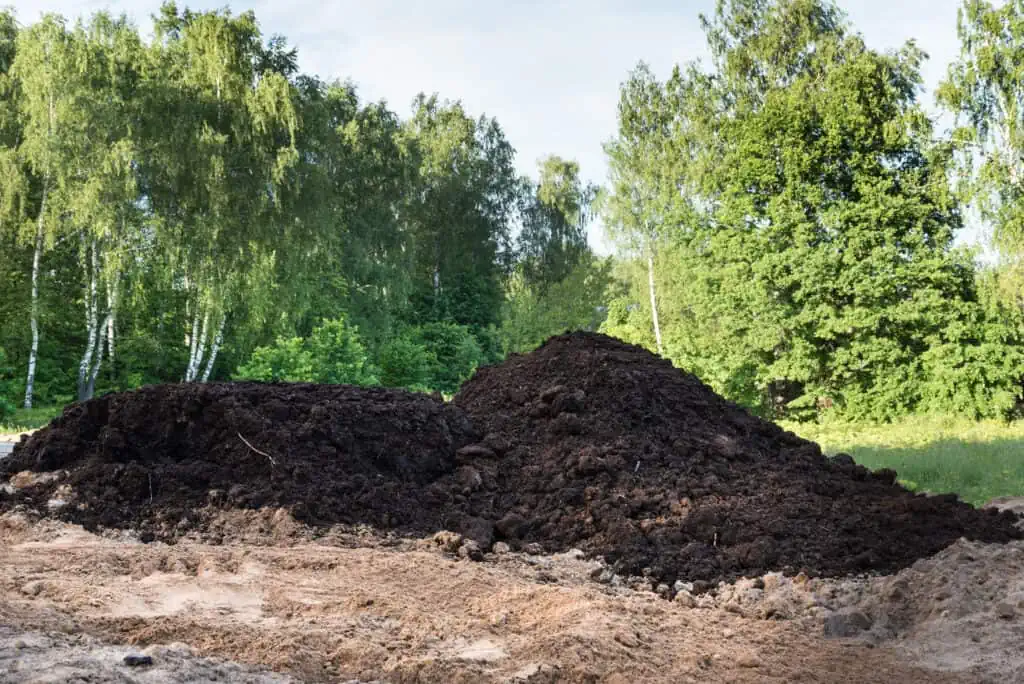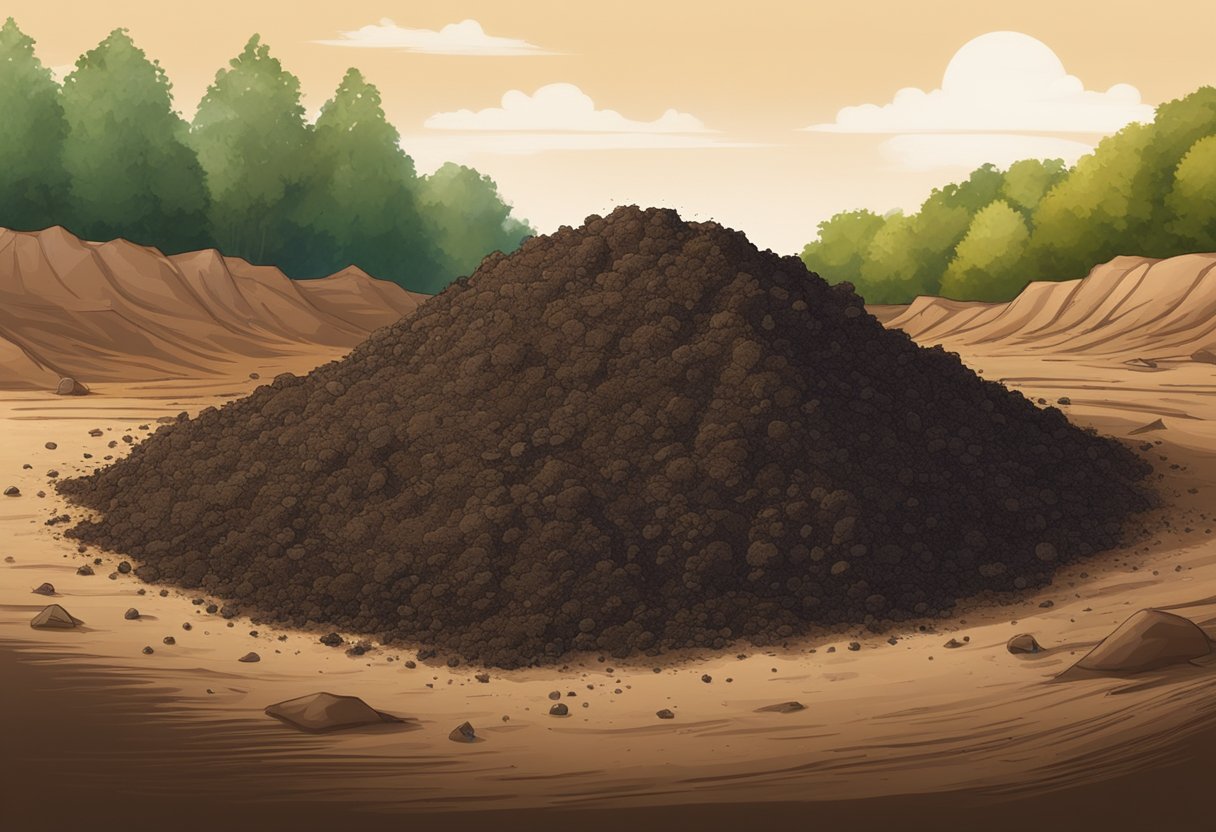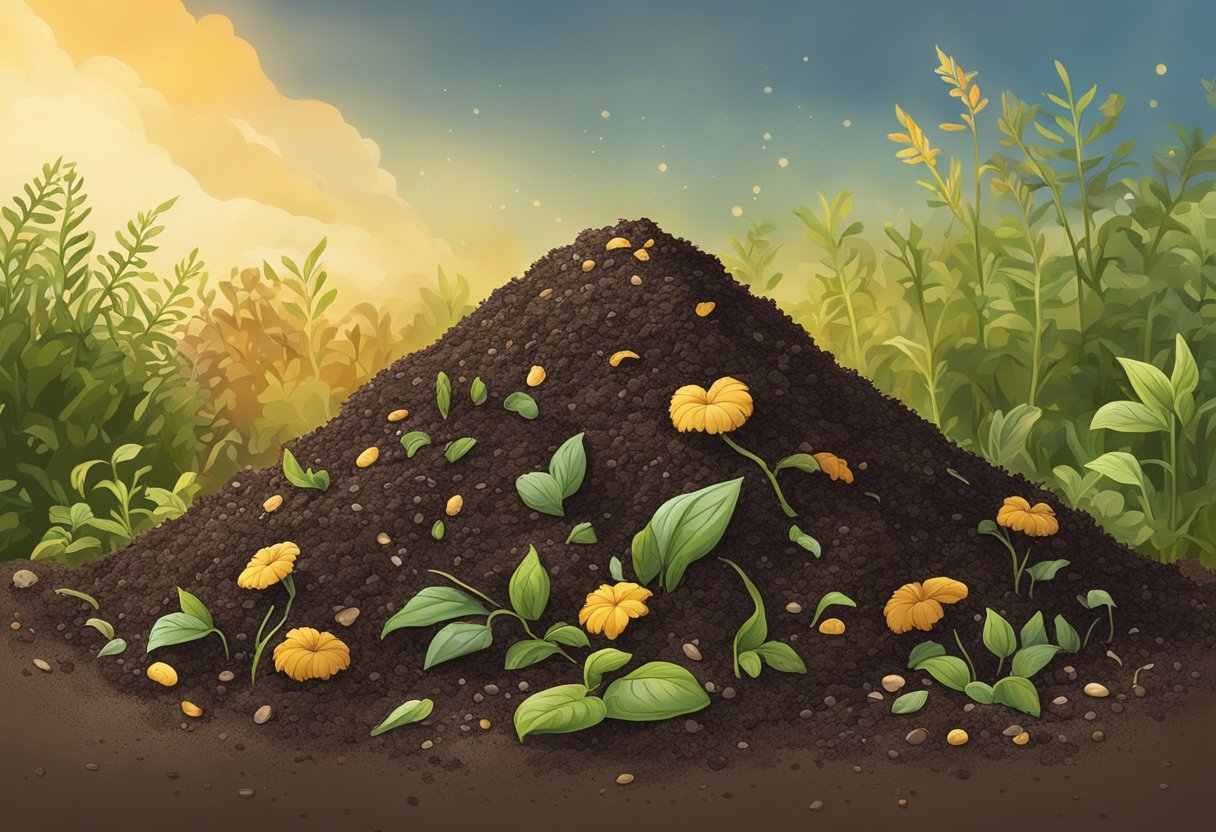As an Amazon Associate I earn from qualifying purchases.
At A Glance
Compost and soil are distinct yet complementary components in gardening and landscaping. Compost is rich in organic matter and nutrients, derived from decomposed organic materials like food scraps and yard waste, and is used to enrich soil fertility, improve soil structure, and enhance microbial activity. Soil, on the other hand, is a natural resource comprised of minerals, organic matter, water, and living organisms, serving as the primary medium for plant growth. While soil provides the essential framework and some nutrients for plants, adding compost to soil enhances its nutrient content, water retention, and aeration, thereby creating a more favorable environment for robust plant growth.
Compost and soil are two essential elements for any gardener. They both play a crucial role in the growth and health of plants. However, they are not the same thing, and it’s important to understand the differences between the two.

Soil is a natural product that forms in the environment. It’s made up of a mixture of minerals, organic matter, water, and air. Soil provides plants with the necessary nutrients and support they need to grow. On the other hand, compost is a mixture of decomposed organic matter, such as leaves, grass clippings, and food scraps. Compost is often added to soil as a way to improve its quality and provide additional nutrients for plants.
Understanding the differences between compost and soil is essential for gardeners who want to maximize their plant’s growth and health. While they both play important roles, they have different characteristics and uses. In the following sections, we’ll dive deeper into the differences between compost and soil and when to use each one.
Understanding Compost

Composition of Compost
Compost is a soil amendment that is created by decomposing organic matter such as plant material, food scraps, and yard waste. The decomposition process is facilitated by microorganisms that break down the organic matter into a nutrient-rich substance. Pure compost is made up of a mixture of humus, which is the decomposed organic material, and other organic matter that hasn’t fully decomposed yet.
Benefits of Compost
Compost has several benefits for the soil and the environment. Firstly, it is a great soil amendment that can improve soil structure and fertility. It also helps to retain moisture in the soil, which can reduce the need for watering. Compost can also help to control weeds and reduce erosion. Additionally, using compost in your garden is a sustainable practice that reduces waste and helps to reduce greenhouse gas emissions.
Process of Composting
Composting is the process of creating compost. It involves creating a compost pile or using a compost bin and adding organic matter to it. The pile or bin should be turned regularly to ensure that the organic matter is broken down evenly. The decomposition process can take anywhere from a few weeks to several months depending on the size of the pile, the type of organic matter used, and the environmental conditions.
Types of Compost
There are several types of compost, including composted manure, organic compost, and municipal compost. Composted manure is made from animal waste that has been composted. Organic compost is made from organic matter such as leaves, grass clippings, and food scraps. Municipal compost is made from organic waste that has been collected from households and businesses and processed at a municipal composting facility.
In conclusion, compost is a valuable soil amendment that can improve soil fertility, reduce waste, and benefit the environment. By understanding the composition of compost, its benefits, the process of composting, and the different types of compost available, you can make informed decisions about how to use it in your garden.
Understanding Soil
Composition of Soil
Soil is a complex mixture of organic and inorganic materials that provide the necessary nutrients for plants to grow. The composition of soil varies depending on factors such as climate, topography, and geological history. Soil is typically composed of minerals, organic matter, water, and air.
The mineral component of soil is made up of sand, clay, and silt particles. The size of these particles determines the texture of the soil. Sandy soil has larger particles, while clay soil has smaller particles. Silt soil is a mixture of both.
Types of Soil
There are several types of soil, each with its own unique characteristics. Some common types of soil include sandy soil, clay soil, loam soil, and rich soil. Sandy soil has a low nutrient content and drains quickly, while clay soil has a high nutrient content but drains slowly. Loam soil is a mixture of sand, silt, and clay and is considered the ideal soil for most plants.
Benefits of Soil
Soil provides many benefits to plants, including the nutrients needed for growth, support for the roots, and water retention. Soil also plays a critical role in the carbon cycle, helping to store carbon in the ground and reduce greenhouse gas emissions.
Understanding the type of soil in your garden is important for successful plant growth. Factors such as soil pH, nutrient content, and texture can all impact the health of your plants. It is essential to test your soil regularly and make any necessary adjustments to ensure that your plants have the best chance of thriving.
Overall, soil is a vital component of any garden and provides the necessary foundation for healthy plant growth. While compost can be a useful soil amendment, it is important to understand the differences between soil and compost and use them appropriately for optimal results.
Compost Vs Soil
As a gardener, it’s essential to understand the differences between compost and soil. Both are crucial components in maintaining a healthy garden, but they serve different purposes. In this section, I’ll discuss the key differences between compost and soil and how to choose the right option for your garden.
Key Differences
Compost is a nutrient-rich material that is made from decomposed organic matter such as leaves, grass clippings, and kitchen scraps. It’s often referred to as “black gold” because of its ability to improve soil structure, increase water retention, and provide essential nutrients to plants. Compost is typically added to soil as a soil amendment to improve its overall quality.
Soil, on the other hand, is a natural product that is formed in the environment. It’s made up of a combination of minerals, organic matter, air, and water. Soil provides plants with the necessary nutrients, water, and support they need to grow. It’s essential to choose the right type of soil for your plants because different plants require different soil types.
Choosing the Right Option
When it comes to choosing between compost and soil, it’s essential to understand your garden’s needs. If you’re looking to improve soil quality, then compost is the way to go. It’s an excellent soil amendment that can help improve soil structure, increase water retention, and provide essential nutrients to plants.
If you’re looking to grow specific plants, then soil is the better option. Different plants require different soil types, so it’s important to choose the right soil for your plants. For example, if you’re growing acid-loving plants like blueberries, then you’ll need to use acidic soil.
In conclusion, both compost and soil are essential components in maintaining a healthy garden. Compost is an excellent soil amendment that can help improve soil quality, while soil provides plants with the necessary nutrients, water, and support they need to grow. Understanding the differences between compost and soil and how to choose the right option for your garden is crucial to a successful harvest.
Role in Gardening

Gardening is all about creating healthy soil that provides the necessary nutrients for plants to thrive. Compost and soil both play important roles in gardening, but they are not the same thing. In this section, I will discuss the role of compost and soil in gardening.
Soil Amendment
Soil amendment is the process of adding organic matter to soil to improve its quality. Garden soil is often depleted of nutrients, and soil amendment is a way to replenish the soil. Compost is a great soil amendment because it adds organic matter to the soil, which helps to improve soil structure and fertility. Compost also helps to increase soil porosity, which promotes better root growth and water uptake.
Plant Nutrition
Plants need nutrients to grow, and soil is the primary source of those nutrients. Compost is a great source of plant nutrients, and it provides a slow-release source of nutrients that plants can access over time. Compost is also rich in microorganisms that help to break down organic matter and release nutrients into the soil. Soil, on the other hand, can be fortified with fertilizers to provide nutrients to plants.
Moisture Retention
Compost helps soil retain moisture, which is important for a healthy garden. Compost has a high water-holding capacity, which means it can retain water and release it slowly over time. This helps to prevent drought stress in plants and reduces the need for watering. Soil conditioner like worm castings, grass clippings, and other organic matter can also help retain moisture.
In summary, compost and soil both play important roles in gardening. Compost is a valuable soil amendment that provides nutrients to plants and helps to retain moisture. Soil, on the other hand, can be fortified with fertilizers to provide nutrients to plants. By using both compost and soil, gardeners can create a healthy garden that provides the necessary nutrients for plants to thrive.
Environmental Impact
Compost and the Environment
Composting is a natural process that can reduce the amount of organic waste that ends up in landfills. By diverting this waste from landfills, composting can help reduce the amount of methane gas that is produced, which is a potent greenhouse gas that contributes to climate change. Composting can also help reduce the amount of chemical fertilizers that are used to grow crops, which can have negative impacts on the environment.
When organic materials are composted, they are broken down by microorganisms that require oxygen to survive. As these microorganisms consume organic matter, they release carbon dioxide, water, and heat. The carbon dioxide that is released during composting is part of the natural carbon cycle, and is not considered a significant contributor to climate change.
Composting can also help improve soil quality by adding organic matter to the soil. This can help improve soil structure, increase water retention, and reduce erosion. Compost can also help improve soil fertility by providing nutrients that plants need to grow.
Soil and the Environment
Soil is a critical component of the environment, and is essential for growing crops and supporting ecosystems. Soil can be impacted by a variety of factors, including drought, erosion, and pollution.
When soil is degraded, it can have negative impacts on the environment. For example, degraded soil may be less able to support plant growth, which can lead to reduced biodiversity and ecosystem services. Degraded soil can also be more prone to erosion, which can lead to sedimentation in waterways and reduced water quality.
The Environmental Protection Agency (EPA) recognizes the importance of soil health, and has developed programs to help promote soil conservation and restoration. These programs focus on improving soil quality through practices such as cover cropping, conservation tillage, and nutrient management.
In summary, composting can have a positive impact on the environment by reducing the amount of organic waste that ends up in landfills, reducing greenhouse gas emissions, and improving soil quality. Soil is a critical component of the environment, and efforts to promote soil health can have important benefits for the environment and human well-being.
FAQs
Here are some frequently asked questions about compost and soil:
Q: What is the difference between compost and soil?
A: Compost is a nutrient-rich soil amendment made from decomposed organic matter, while soil is the natural material that plants grow in. Compost is often added to soil to improve its structure, water retention, and nutrient content.
Q: Can compost be used as a substitute for soil?
A: Compost can be used as a soil amendment to improve soil quality, but it is not a substitute for soil. Plants need soil to anchor their roots and provide a stable growing environment. Compost can be mixed with soil to create a nutrient-rich growing medium.
Q: How do I make compost?
A: Compost can be made by combining organic matter such as food scraps, yard waste, and leaves in a compost bin or pile. The organic matter should be periodically turned to allow oxygen to circulate and speed up the decomposition process. Over time, the organic matter will break down into a nutrient-rich soil amendment.
Q: Can I use compost in container gardening?
A: Yes, compost can be used in container gardening to improve soil quality and provide plants with essential nutrients. When using compost in containers, it’s important to mix it with other materials such as potting soil to ensure proper drainage and prevent waterlogged roots.
Q: Is composting better for the environment than using synthetic fertilizers?
A: Composting is a more environmentally friendly alternative to using synthetic fertilizers because it recycles organic waste and reduces the amount of waste sent to landfills. Compost also improves soil health and reduces the need for chemical fertilizers, which can have negative impacts on the environment.
Q: Can I use compost to grow vegetables?
A: Yes, compost can be used to grow vegetables and other plants. In fact, many organic gardeners prefer to use compost instead of synthetic fertilizers because it provides plants with essential nutrients and improves soil health. When using compost to grow vegetables, it’s important to ensure that the compost has fully decomposed to prevent the risk of pathogens and weed seeds in the soil.
